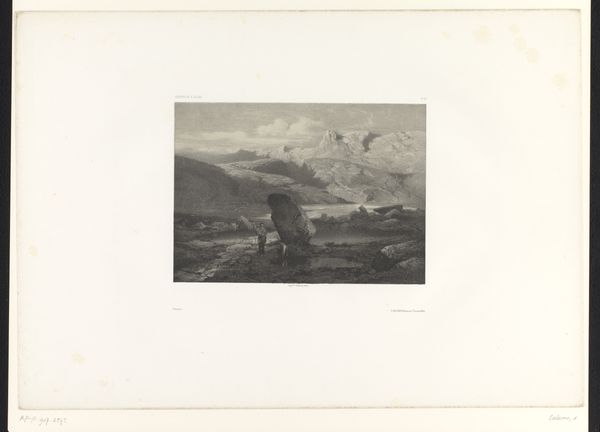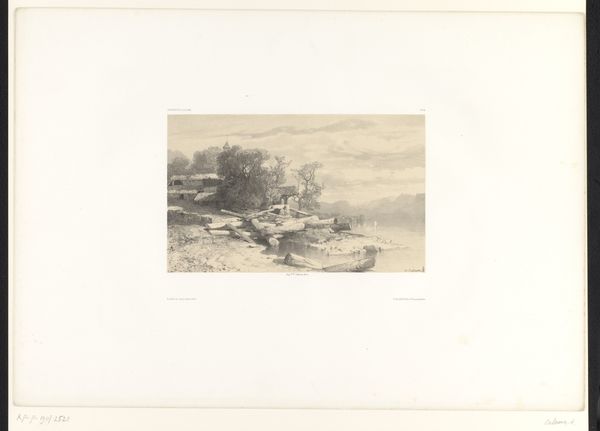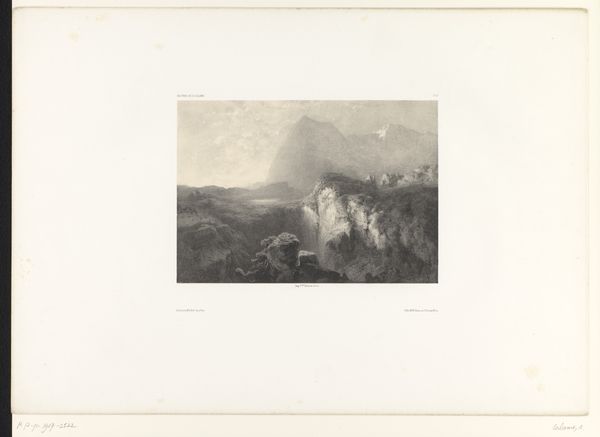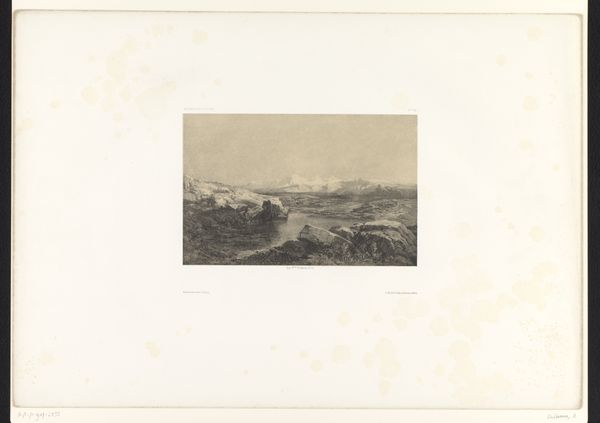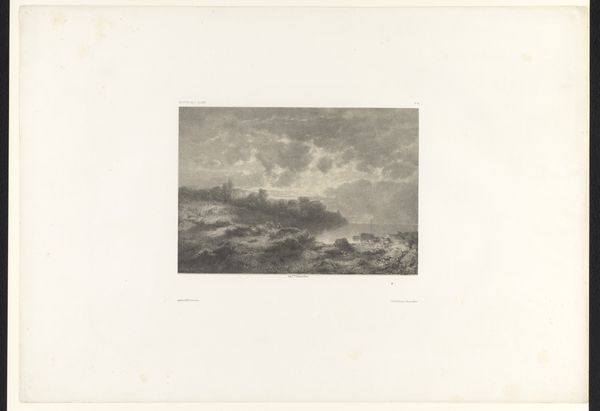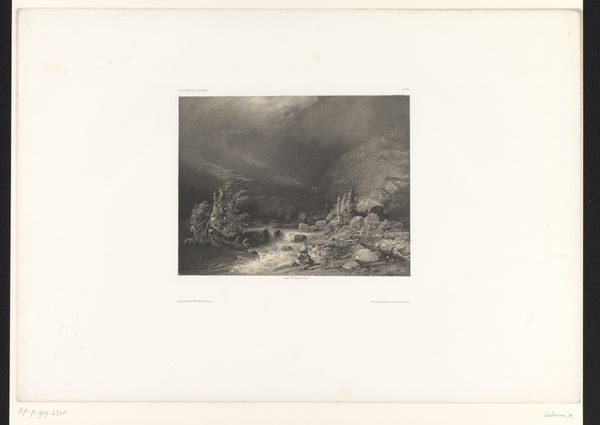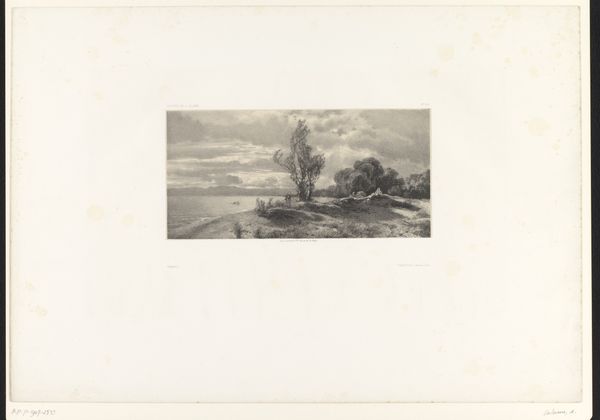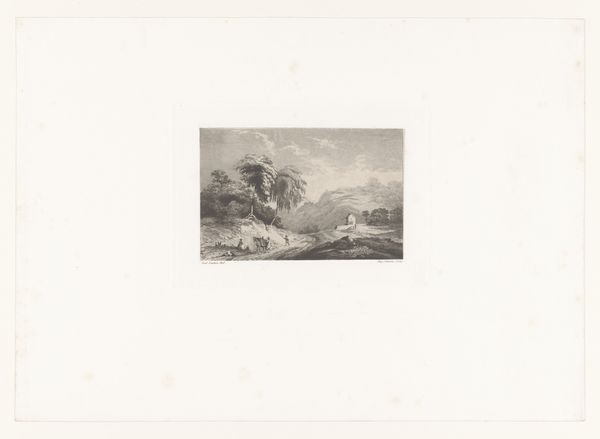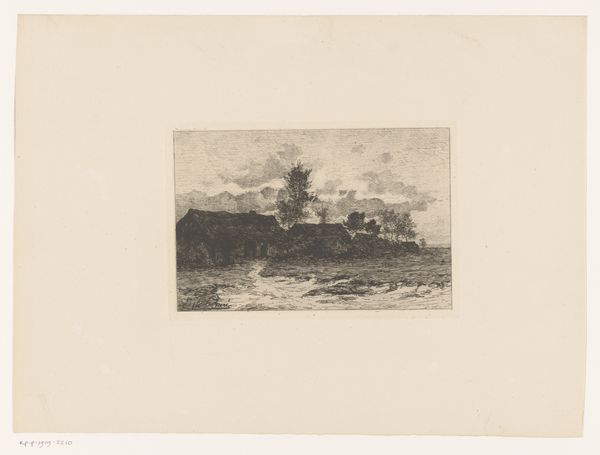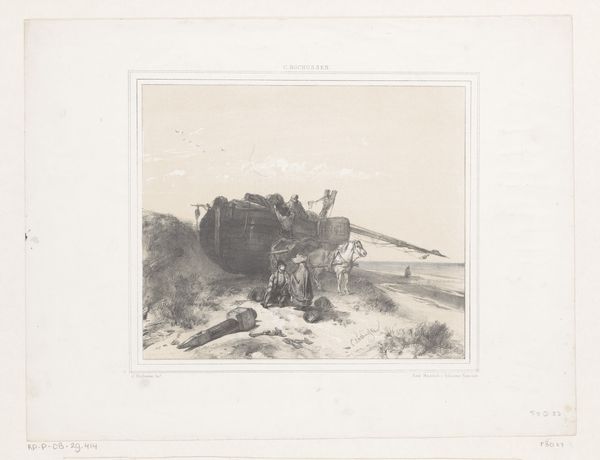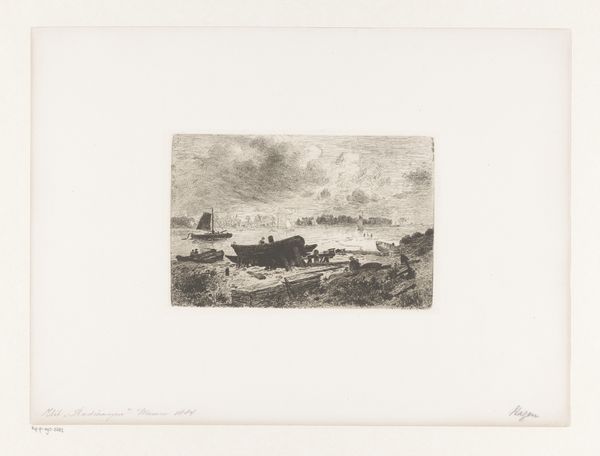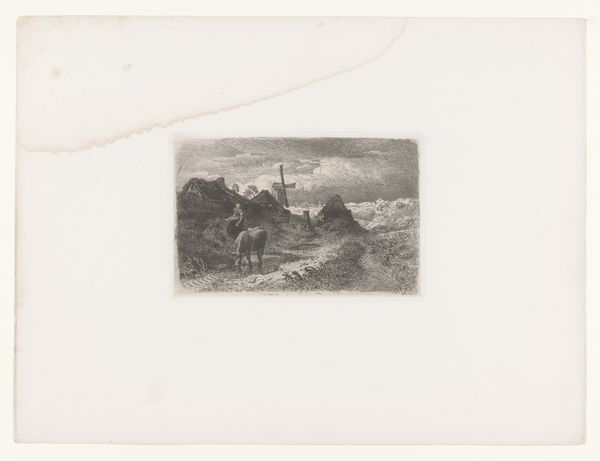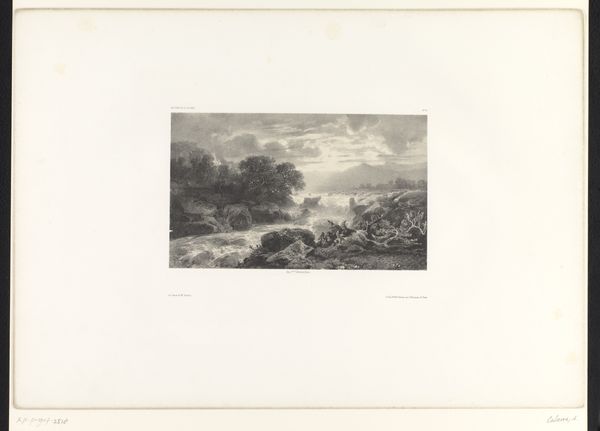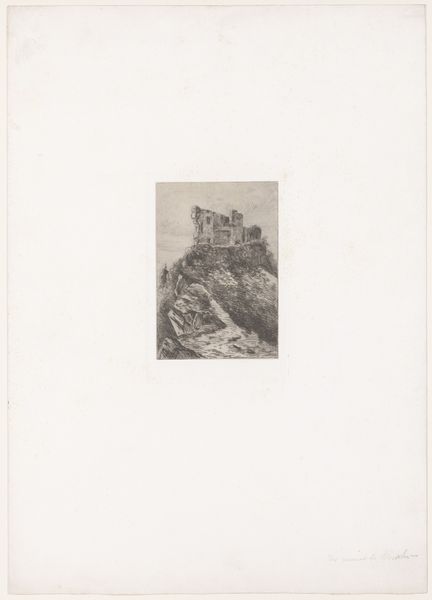
print, etching
# print
#
etching
#
landscape
#
realism
Dimensions: height 390 mm, width 560 mm
Copyright: Rijks Museum: Open Domain
Alexandre Calame created this landscape featuring a ruin on the rocks, capturing a scene laden with symbols of time and decay. The ruin, perched precariously on the rocks, speaks of past glories now crumbling, a poignant symbol of the transient nature of human achievement. This motif of ruins has echoed through art history, from the Romantic visions of Caspar David Friedrich to the classical landscapes of Claude Lorrain. Consider how the ruin evolves, from a symbol of divine retribution in medieval art to a nostalgic emblem of lost grandeur during the Renaissance. The emotional power of ruins lies in their ability to evoke melancholy and reflection. They tap into our collective memory, reminding us of the inevitable decline that awaits all things. Perhaps, subconsciously, we are drawn to these scenes because they reflect our own mortality and the passage of time, a powerful force that engages viewers on a deep, subconscious level. Thus, the ruin in Calame's landscape is not just stone and mortar, but a potent symbol resonating through centuries, its meaning shifting yet always reminding us of the cyclical nature of history.
Comments
No comments
Be the first to comment and join the conversation on the ultimate creative platform.
